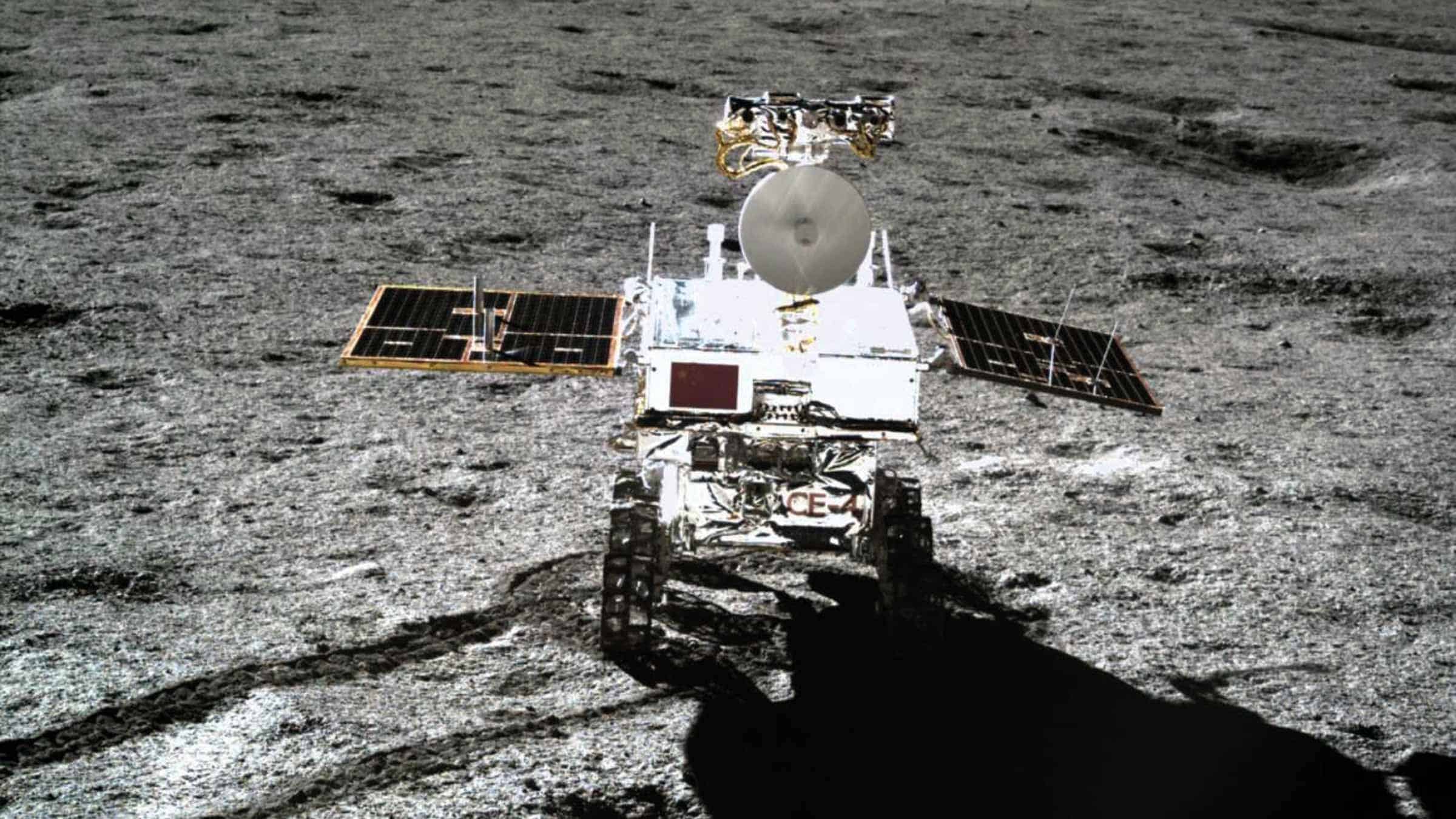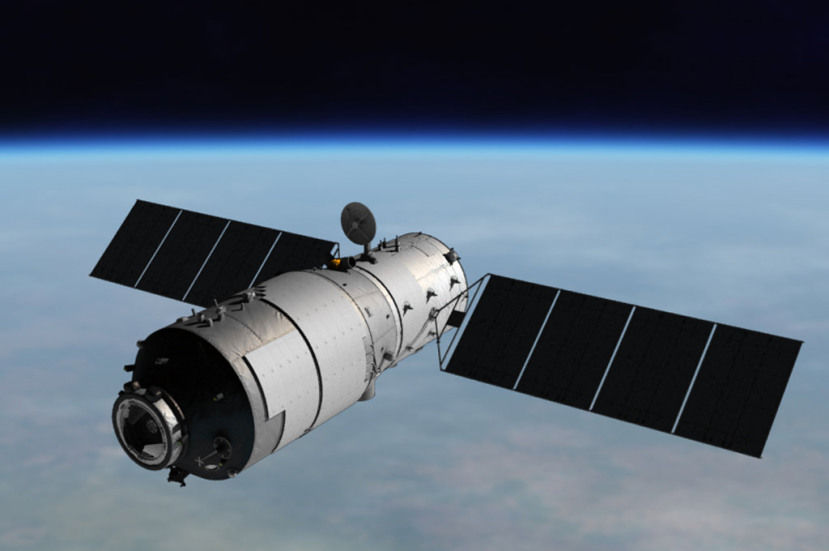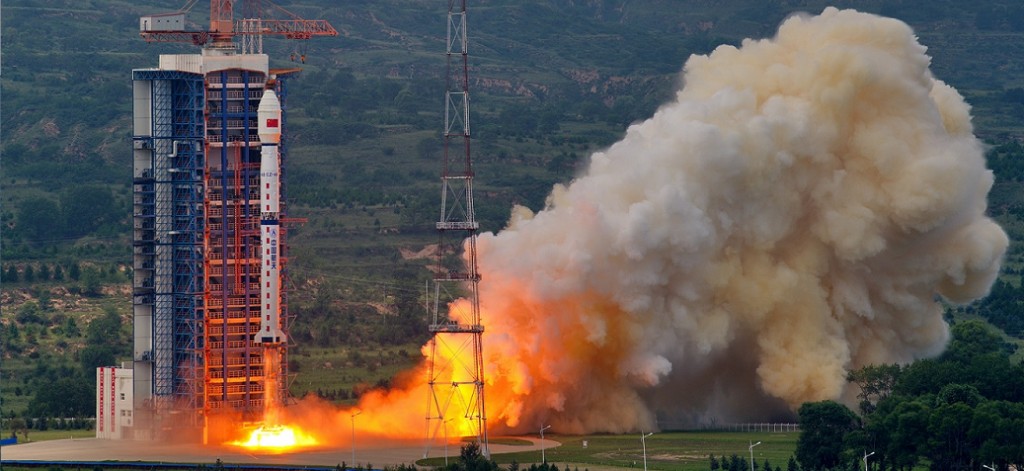Relevance: Prelims: Science and Technology
►CHANG’E-4 MISSION

China launched Chang’e-4, a first probe ever to explore them dark side of the Moon.
DARK SIDE OF THE MOON
- Hemisphere of the Moon that always faces away from Earth.
- The dark side’s terrain is rugged with a multitude of impact craters
- Both sides of the Moon experience two weeks of sunlight followed by two weeks of night; the far side is sometimes called the “dark side of the Moon”, meaning unseen rather than lacking light.
ABOUT THE MISSION
- The Chang’e-4 has entered a planned orbit “to prepare for the first-ever soft landing on the far side of the moon”.
- Previous spacecraft have seen the far side of the Moon, but none has landed on it.
- Chang’e 4 is the fourth mission in the country’s lunar mission series which is being named after the Chinese moon goddess.
OBJECTIVES OF CHANG’E-4
- low-frequency radio astronomical observation,
- surveying the terrain and landforms,
- detecting the mineral composition, and
- measuring the neutron radiation and neutral atoms to
study the environment on the far side of the moon.
►BEIDOU

China has added new satellites to its BeiDou Constellation. BeiDou is the Navigation Satellite System of China
FACTS
- China is currently developing the 3rd generation of BeiDou.
- It has already launched BeiDou-1 and BeiDou-2.
- BeiDou-1 and BeiDou-2 were regional in nature.
- BeiDou-3 would have global coverage
- It would be more accurate than US based Global
Positioning System (GPS)
- BeiDou-3 would have a constellation of 35 satellites.
►TIANGONG-1

Tiangong-1, which means “celestial place-1”, was the china’s first prototype space station and it orbited Earth from September 2011 to April 2018.
EXPLAINED
- The space station acted as a manned laboratory and experimental test bed for the Chinese space program.
- The ground station lost control over the space station and
Tiangong-1 re-entered earth’s atmosphere and was destroyed.
►GAOFEN 11

China has launched an optical remote sensing satellite as part of her China High-Resolution Earth Observation System (CHEOS).
EXPLAINED
- Gaofen-11 satellite will be utilized for land survey, urban planning, road network design, agriculture and disaster relief.
- The data provided by the Gaofen 11 will be used for China’s ambitious Belt and Road Initiative as well.
- Under the Gaofen project China has planned to launch seven high definition observation satellites and these satellites will circle earth at low orbits (600 to 700 kms).
►YUTU-2
IN NEWS
China has named the lunar rover, successfully deployed to carry out a string of experiments on the far side of the moon, as ‘Yutu-2’. It is part of China’s Change 3 mission to moon.
EXPLAINED
- China’s lunar probe is part of its ‘Made in China-2025’ project, which focuses on advanced technology, including space applications.
- The rover has been programmed to launch ground penetration radar that would help map the moon’s inner structures.
- It would also analyse soil and rock samples for minerals, apart from activating a radio telescope to search for possible signals from deep space.
- It follows the BeiDou Navigation Satellite System — China’s homegrown Global Positioning System that started worldwide service.
- It is said that China is considering mining there for helium-3, a rare substance on earth that can be used as a fuel in nuclear fusion power generation.
For more such notes, Articles, News & Views Join our Telegram Channel.
Click the link below to see the details about the UPSC –Civils courses offered by Triumph IAS. https://triumphias.com/pages-all-courses.php

